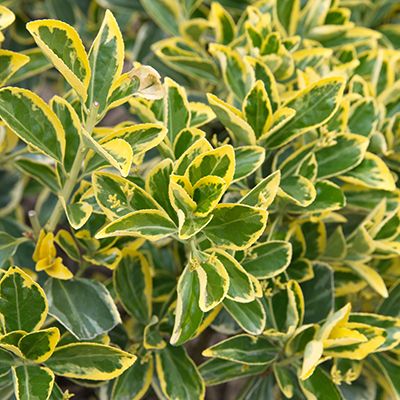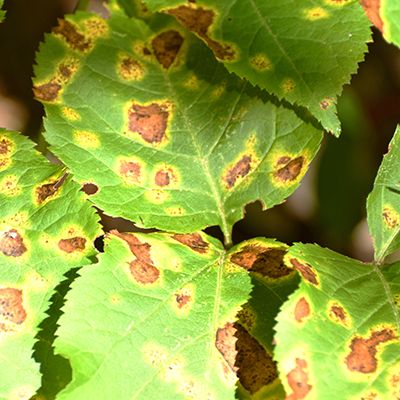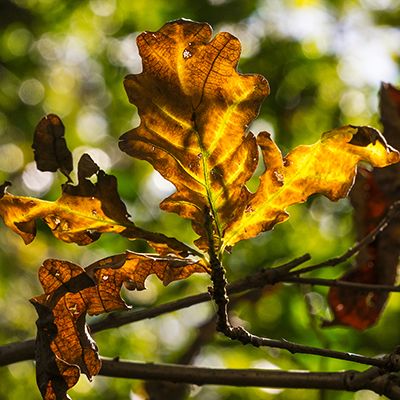


Yellow Plant Leaves
Chlorosis is a systemic condition in which a plant’s leaves turn yellow. There can be many explanations for this condition.
NORMALCY
There are some plants which are supposed to have all or partly yellow leaves. If the leaves are mostly green with a yellow (or white) border or mostly yellow with a green border we say that the leaf/plant is variegated. If most of the leaves display this coloration, it is a normal, genetic variation. Examples of such plants are: Daphne, some Hosta, Crème de Mint Pittosporum, Pittosporum Tobira Variegate, Glacier Ivy, Variegated Vinca minor, and many others. Sunset Gold Coleonema has entirely yellow foliage but that’s the way it is supposed to be.
VIRUSES
Occasionally, a plant will develop yellow spots, or circles, or lines, on its leaves. These discolorations are not uniform or similar on all of the leaves and if you hold the leaf up to the light, the discolorations are more apparent.
These yellow discolorations are likely caused by a virus. Plants commonly affected, but usually not harmed are: Flowering Maple, Roses, Dwarf Nandina, Camellias, and Apple Trees. There is no cure for virus disease in a plant and it can be spread by insects, grafting or on pruning shears. Stressed plants (low temperatures or lack of water) often display more pronounced symptoms. Other viruses such as Tobacco Mosaic Virus can infect and kill Nictotiana plants, petunias, Potatoes, Tomatoes, and even Peppers. Again, the first symptoms are yellow leaves or leaves with yellow spots.
OTHER DISEASES
Diseases such as Rose Rust and Blackspot often start on leaves as yellow spots with black centers. These yellow spots enlarge and merge until the entire leaf is infected and yellow and then falls off. These diseases are best prevented by spraying prophylactically with a fungicide when the new leaves are one-half to three-quarters inch long and then monthly before the plant becomes infected with the disease.
SENESCENCE
Senescence refers to the changes which take place in a plant or other organism as it ages and nears the end of a particular life cycle. In a tree or shrub, this is most commonly seen in its leaves. In deciduous trees, senescence occurs in the fall on a yearly basis. The leaves on Birches, Ginkgoes, Coral Bark Maples and many other trees turn yellow and drop off each year as the growing season comes to an end. The tree does not die, but each individual leaf does.
Leaves are extremely complex food factories. The green color of the chlorophyll in the leaves is so dense that it masks two other leaf pigments; orange carotenes and yellow zanthophylls. As the days get shorter, the chlorophyll slowly breaks down and the other pigment colors show up producing the autumn colors of fall. Reds, blues and purples are produced by a different process when sugar stored in the leaves is converted to a pigment called anthocyanin. Leaf colors are genetically determined so not all leaves have all colors.
Evergreen plants such as Gardenias, Citrus, Avocado, Pittosporum, and others have green leaves all year long and so are called broad-leaved evergreen plants (as opposed to coniferous evergreens such as Spruce or Pine trees). Even though the broad-leaved evergreens are continuously green, each individual leaf has a life span of about two years. After two years or so, the leaf turns yellow and falls off the bush or tree. Simply put, the leaf gets old and dies and falls off. Senescence is usually most evident in Citrus and Gardenia plants, occurring in late spring or early summer. The oldest leaves are usually those closest to the trunk of the tree. As the leaves age, the minerals and nutrients in the leaf translocate and circle back into the stem and on into the new leaves at the tip of the stem. The old leaf then turns yellow, dies and drops off. This event can be quite dramatic when hundreds of leaves turn yellow and fall off the tree within a few weeks time. Often, the home gardener suspects a catastrophic event when it is a perfectly normal part of the plant’s life cycle. Nothing needs to be done to stop this event because it can’t be stopped. Always examine the new growth at the tips of plants. If it is a bright green, the plant is functioning normally.
NUTRIENTS
Many plants in the Bay Area are chlorotic; their leaves lack the deep dark green of healthy vigorous plants. When a leaf is plucked from this plant and held up to the light, the veins appear dark green but the area between the veins is a lighter green. This form of chlorosis is one of the most common symptoms of Iron or Nitrogen deficiency. For gardeners not familiar with our Bay Area soil, their solution is to dump quantities of some Iron product into the soil around the plant. When the plant does not respond with a strong, dark green color, the conclusion is that an incorrect diagnosis was made. Gardeners working in Bay Area soils are familiar with heavy clay soils or in the hills, with soils full of green rock (serpentine). Both of these soils are very alkaline which is not a healthy situation for plants. Soils and water are measured for acidity or alkalinity on a chemistry scale called pH. A pH of zero (0) is the most acidic a solution can be while a pH of fourteen (14) is the most alkaline (basic) a solution can be. A solution of pH7 is neutral; neither acid nor alkaline. Anything below 7 is acidic and above 7 is alkaline. A pH change of 1 unit (7 to 6 or 7 to 8) is a tenfold change. A two unit change (10x10) is a 100 fold change. Clay soils (old ocean bottom) are very rich soils and contain all the minerals a plant might need. However, for the plants to use the minerals, they must be dissolved. Minerals dissolve in an acid environment but not in an alkaline one. Most plants grow best in a slightly acidic environment (about pH6.5). Rhododendrons, Camellias and Azaleas need a pH of about 6 and Blueberries between pH5 to 5.5. Unfortunately, clay soils and serpentine are alkaline with a pH of 7.5 to 8. Because the soil is alkaline, many minerals in the soil do not dissolve especially Iron and Nitrogen. Therefore, they are not available to the plants. The gardener can dump pounds of Iron on the soil but if it does not dissolve, it is of no value. To make matters worse, our water has a pH of 8.5 to 9 making it 100 to 500 times more alkaline than the plants can use.
The only way to adjust soil pH is to add sulfur to the soil or better yet, Iron Sulfate. The Sulfur combines with water in the soil and changes to sulfuric acid which adjusts the soil pH downward. All of the Master Nursery fertilizers contain both Iron and Sulfur (some more than others) and when used regularly help to provide a proper soil pH for the plants. Organic fertilizers contain little or no Iron or Sulfur and therefore must be supplemented to provide the proper pH for normal plant growth.
A final note of advice: Don’t plant dwarf Citrus trees close to the house foundation. The concrete foundation contains lime (very alkaline) which slowly leaches out into the soil increasing its pH. Mr. Ed visited a garden with a Meyer Lemon in such a location and with all of its leaves the color of lemon rind. Unfortunately, it was too late to reverse the condition and the plant soon died.